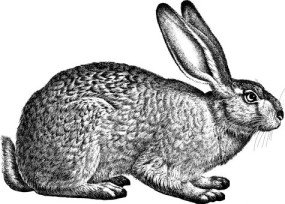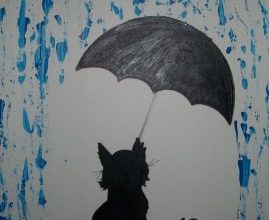
Raymond’s Run explores a black neighborhood of Harlem in New York City through the lens of a child narrator who views her society unconventionally. Squeaky and her presumable mentally unsound brother Raymond form the central characters of the story. By thrusting on the dynamics of the relationship between a sister and a brother as well as on female friendships, the author navigates a space for women’s empowerment and identity exploration with a discourse on the disparity between ableism and disability.
“Raymond’s Run” is featured a collection of stories Gorilla, My Love (1971) by renowned African-American novelist Toni Cade Bambara.
Raymond’s Run | Summary
The story opens with a young girl Squeaky, otherwise named Hazel Elizabeth Deborah Parker, as the narrator who spills on her responsibilities concerning her brother Raymond. He needs attention because he has a “big head”. As a strong girl, she protects him at every cost by shielding him from insults and mockery. There is a revelation about her nickname ‘Squeaky’ that owes to her “skinny arms and squeaky voice.” But she is intolerant to any nonsense pertaining to Raymond’s condition and believes to be capable enough to engage with bullies in physical action if ever the situation demands.
She introduces the annual May Day race event where she is a winner every year and wishes to maintain her reputation. As a passionate runner, hard work and consistency in practice are never to be compromised for her. Since this year, a new opponent Gretchen enters the competition to pose as a worthy opponent, Squeaky immediately resolves to prepare herself for the run. Raymond always accompanies her on her breathing and exercise schedules because he is her responsibility and she allows him only if he is not a troublemaker. She discloses certain past events where Raymond creates a nuisance on the traffic-stricken road causing a commotion and disturbance to regular walkers.
Squeaky further expounds on her practice routines and comments on people like her classmate Cynthia Procter who often hide the fact that they work towards achieving their goals by acting like a “regular prodigy.” There are also other girls who she doesn’t particularly like Gretchen and her two sidekicks Mary Louise and Rosie who try to mess with Raymond for fun banter when they bump into each other at Broadway during Squeaky’s breathing lessons.
May Day arrives and Squeaky avoids attending the pole dance event precious to many girls of her age. Her interest lies in Mr. Pearson’s arrival who is responsible for handing out pins to all the participants. But her anticipation comes to an unexpected end when he proposes to Squeaky to let someone else win this year. This disturbs her and she proceeds to the line for her fifty-yard dash and recalls her dreamland as a ritual before every race. It transports her to a world where she is light-weight and free-floating like a feather that provides the necessary push and energy in the race.
In an interesting turn of events, she notices Raymond on the other side of the fence preparing to run in his own distinct style. It tempts her to stop right in the middle of the race but the proximity of the finishing line compels her to run through the white ribbon first. Gretchen and Squeaky apparently finish together and confusion overwhelms the commentators who are deciding the winner. But the win does not interest Squeaky anymore, though she wins the race. It is Raymond’s ability to run which is in line with their family tradition that commands her attention. She marvels at her brother’s unique style of running and sees hope for a good athlete in him. This leads to her alternate plans for a career not as a runner but as a coach to her brother and a different, soft and sensitive side to her personality emerges. Also, Gretchen shares a sportsman spirit with her by congratulating her on her win and the budding enmity disappears for the first time.
The story culminates with a moral lesson that encourages everyone to be a human first and then ascribes an identity to oneself because if there is no compassion and consideration for a fellow being, the ideal purpose of one’s existence faces a defeat.
Raymond’s Run | Analysis
The author employs a first-person narrator who is a young girl named Squeaky as she views the world in a different light. There is a great focus on the Harlem dialect to emphasize her native identity and conversational English makes it an easy read. The tone is often sarcastic and humoristic with various instances of intelligent writing as observed in the phrases “ventriloquist-dummy routine,” “no use wasting my breath talking to shadows” and “because even grass in the city feels hard as a sidewalk, and there’s just no pretending you are anywhere but in a ‘concrete jungle.’” One can feel continuity in the sentences through the multiple uses of the conjunction “and” for most of the sentences. An outright bluntness on the part of the narrator to expose the social facade shadows the entire piece that contrasts the optimism she displays towards her brother.
The plot deals with a sister’s protective stance on her mentally unsound brother that couples with her aspiration to be a regular winner at the May Day races. Most of the narrative provides space to Squeaky who raises thought-provoking questions at a young age such as the need for denial of a well-practiced activity only to portray it winning as a chance happening. Or the necessity to pass a fake smile when one doesn’t mean well to the other. She also tries to comprehend the false parameter of femininity that bases its judgment on one’s participation in pole dancing on May Day. Why should one practice these farcical activities? She asserts her identity as “I am not a strawberry. I do not dance on my toes. I run. That is what I am all about.”
However, the author fails to answer these questions. Apart from her interrogation, Squeaky occupies the narrative through her race stories and running practice routines. She comes out as a self-absorbed individual at the beginning of the story who undoubtedly loves her brother but still gets offended when he interferes with her schedule. Before the race, until that moment, she always viewed her brother as a man who needs care and guidance. But the moment of epiphany hits her right during her race when she observes Raymond running as well. It is equivalent to a secret that comes out in the light and her focus shifts from herself to her brother. Later, she determines to be his coach and polish his skill which is an act of thinking over and above one’s self.
Hence, Squeaky can be considered a bildungsroman character who develops over the course of the story. She comes out of her preoccupation with running and aims to direct her efforts to a better cause. As a considerate young sister, she wishes Raymond to achieve more in his life. The narrative becomes a journey of self-discovery for her who now finds a new purpose for herself. She is not just a sister anymore who is responsible to look after her brother but also a future coach who will train and prepare him better.
The ending of the story is a moral lesson that articulates sportsmanship and respect which advocates for humanity. One needs to identify himself/herself as a human first before ascribing to other identities. Squeaky voices the sad truth of her society which is relatable even today- “we don’t practice real smiling every day, you know, cause maybe we’re too busy being flowers or fairies or strawberries instead of something honest and worthy of respect … you know … like being people.”
Raymond’s Run | Themes
RUNNING AS A MOTIF – The story peruses ‘running’ not only as a sports activity that includes competition and winning but also as a motif that symbolizes a desire to escape and be free. Squeaky lives in a poor neighborhood of Harlem and as a black girl she is a subject of discrimination and injustice. While the story does not opt to reflect on social and political conflicts, one cannot deny that the joy she derives from running is somewhere related to her desire to be free from this controlling society. There are too many instances that show Squeaky’s refusal to follow gender conventions or pretentious behavior towards her peers. Her sarcastic remarks question these practices and the only solace she finds is in running. Even her dream describes her to be flying and lightweight which signals her impulse to be rid of all societal burdens. But as it is seen, she cannot run away from her responsibilities, especially towards her brother and towards the end, she chooses to train her brother to be a better runner, not as an escapist but as an athlete.
DISABILITY – Raymond’s disability does not form the central premise of the story which in a view is both positive and negative. Since the title of the story falls on him, more space for his condition and how he overcomes it would have been a suitable choice. However, by not centering the work on his disability, the author does a remarkable job of giving out a message that a person is a human first. Disability is just one of the defining characteristics, not the only one.
The assumption of Raymond is mentally unfit owes to his quirky walking style and strange imagination. But his lack of mental balance does not overshadow his physical ability to run. He proves his skill during the May Day race which impresses Squeaky and for the first time brings him to attention for his ability and not disability.
GENDER – Bambara chooses a woman protagonist in most of her works, not due to her gendered identity as a woman but because early African-American literature didn’t feature women as central characters. In this story, the author deliberately chooses to keep aside the politics of white supremacy and black consciousness solely to focus on the internal conflicts and challenges in Harlem society. What kind of relationship a woman shares with other women and also with men becomes a matter of contestation. The young narrator’s portrayal as a street-smart, strong-willed and confident girl advocates a personality every woman should aspire to achieve. She is responsible for her brother’s safety and proves her capability in multiple instances. In this way, she turns the gender spectrum where a man is seen fit to be responsible to look after a woman. Further, her aspiration to be a runner is radical as one didn’t see many black women participating in sports during the 1970s. But this gives an insight into the ambitions a woman does harbor and works hard towards. Squeaky’s determination and goal-oriented nature is worthy of praise as she successfully demonstrates her skills and abilities.
Raymond’s Run | Characters
SQUEAKY – She is the narrator of the story who is named by her family Hazel Elizabeth Deborah Parker. Unlike other girls of her age, she is a strong-willed and rebellious child whose worldview defies all social conventions and flouts gender roles. As a protector to her brother Raymond, she adopts the otherwise male-oriented job of preventing dangers to befall a person in distress, usually a woman. But her character is refreshing in her quest to be a runner and win accolades. She has dreams and goals which allows her to be a girl who bears no nonsense. Hard work and consistency are the key mottos of her life and often in the narrative, she ridicules certain behavioral practices of women in her neighborhood that premise on pretense. She refuses to engage in any facade and focuses on her race.
Concerning her relationship with Raymond, she loves him and protects him from mockery but occasionally turns to mean to him as well when he unknowingly interferes with her practice schedules. Most of the plot focuses on her self-absorption with her ability to run fast which sidelines her brother but eventually she sees potential in him as a runner with his own distinct style. Despite his condition, he wills to run and defeats his disability. A change of character engulfs Squeaky who now focuses her attention on her brother and his skills. She wishes to coach him to be an athlete as he has not achieved anything yet while her room is full of trophies. Her contribution to the betterment of Raymond’s life reflects her true self which was hidden under the garb of a fierce overachiever.
RAYMOND – He is Squeaky’s brother whose condition the writer does not discloses. However, an assumption about a mental disorder surfacing in his life fits best with his physical and behavioral attributes. He is not given any dialogue in the story except one word “Gidyap” and is an object of scrutiny and mockery by people in his neighborhood. His sister protects him from insults to which he is not much receptive. The narrator gives evidence of his imagination skills while accompanying her in breathing routines. The overcrowded roads become a circus for him and he attempts to play tricks by jumping and running, often causing commotion and distress to people sitting peacefully at stands. At the climax of the story, a new Raymond draws the attention of his sister. He runs parallel to Squeaky in a unique way that renders him a promising future in his sister’s eyes. She decides his fate to be different from other people with disabilities and thus resolves to train him.
MR. PEARSON – He is responsible for pinning numbers to the participants on the race day and is popularly called “Jack and the Beanstalk” due to his stilts. He makes an unwelcoming suggestion to Squeaky that demands her to lose the race deliberately in order to let someone else win. The seriousness of his suggestion is ambiguous but it does highlight his character as an unethical professional giving out unfair advice to young participants.
GRETCHEN – She is a challenger to Squeaky in the fifty-yard dash race who initially acts rude to her not by words but through awful glances. However, after the race, she displays her sportsmanship by congratulating Squeaky on her win and passes with a friendly smile.
ROSIE – She is a fat girl acting as a sidekick to Gretchen who speaks for her and taunts Squeaky regarding Raymond. It is evident she possesses no head of her own and is a clingy follower of Gretchen who likes to bully weak people like Raymond.
MARY LOUISE – She is the other sidekick of Gretchen who was once helped by Squeaky from bullies as a new resident in Harlem. But now the tables have turned and she ridicules and taunts Squeaky as a thankless individual.
GEORGE – He is Squeaky and Raymond’s brother who is responsible for errands of the house. Earlier, Raymond’s needs and care were looked after by him but he couldn’t prevent his bullying effectively.
Raymond’s Run | Literary Devices
Imagery – The author employs imagery as a key device in the story to especially give a window to Raymond’s thoughts who is deprived of dialogues in the narrative. Squeaky gives out the first instance in the description of Raymond’s fantasy land where he imagines being “a circus performer and that the curb is a tightrope strung high in the air.” During his walks with his sister, he “plays like he’s driving a stage coach” which Squeaky bears as long as he does not run over her.
The imagery continues in Squeaky’s dream sequence which is a ritual before every race. She states, “I’m flying over a sandy beach in the early morning sun, kissing the leaves of the trees as I fly by. And there’s always the smell of apples, just like in the country when I was little and used to think I was a choo-choo train, running through the fields of corn and chugging up the hill to the orchard.”
Simile – Mr. Pearson’s remark to Squeaky to let someone else win this year hints to Gretchen who he looks for “like a periscope in a submarine movie.”
Contrast – While describing Rosie who is a big bully to Raymond, Squeaky draws a contrast between their physicality by mentioning Rosie “as fat as I am skinny.”
Anaphora – Squeaky’s assertion that Gretchen is incapable of winning the race is highlighted in her claim where she states- “In the second place, she’s got short legs. In the third place, she’s got freckles. In the first place, no one can beat me and that’s all there is to it.” The listing of reasons for the repetitive use of “In the…place” is an example of anaphora.




